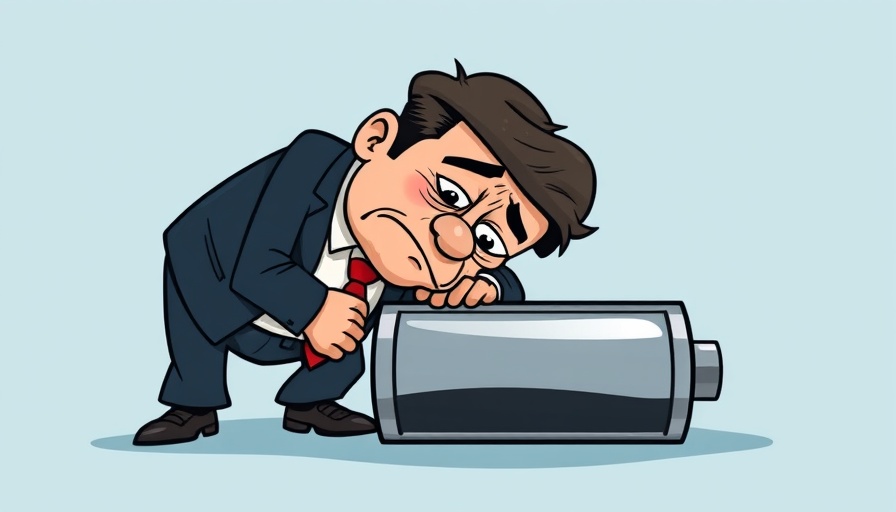
The Executive Crisis: Unpacking Burnout's Hidden Costs
In today's fast-paced business environment, the toll of executive burnout is often underestimated. When leaders reach their breaking point, the ramifications can cascade through their organization, influencing not only strategy but the very culture of the company. Just as a championship team relies on its star players, businesses depend on their executives to set the tone and pace. But when those leaders falter due to burnout, the effects ripple outward, potentially jeopardizing the entire organizational structure.
Understanding Executive Burnout: The Invisible Epidemic
Executive burnout is not simply a personal failing; it manifests as a significant weakness in an organization’s strategy. Senior leaders exhibit high levels of stress, which often remains invisible until it’s too late. According to recent research, nearly 70% of C-suite leaders are contemplating leaving their current roles due to burnout. Here’s the catch: this isn’t merely about individual fatigue; it’s about systemic implications. When leaders are burnt out, they prioritize immediate gains over long-term strategy, risking the stability and innovation of the entire organization.
A Systematic Approach to Self-care
To combat this disturbing trend, businesses can adopt a robust framework like that seen in elite sports where athletes use energy management to enhance performance. Rather than merely managing time, executives should focus on energy management. By aligning their most crucial tasks with their peak energy levels, leaders can preserve vitality and ensure that their decision-making remains sharp and effective.
The Ripple Effect: How Leadership Burnout Affects Teams
It’s vital to acknowledge that burnout at the executive level doesn't only affect the individual but sends shockwaves through the entire organization. Disengaged leaders can create a culture of cynicism and compliance that stifles innovation and motivation. As highlighted in research from the Small Business Association of Michigan, when executives are unable to inspire their teams, productivity drops and turnover spikes, leading to a toxic environment that many employees want to escape.
Implementing Effective Strategies to Foster Well-being
So, what can organizations do to prevent burnout from consuming their leadership? Establishing healthy work-life boundaries is paramount. Leadership must lead by example, demonstrating that mental health is a priority. This could mean enforcing mandatory vacation days or advocating for mental health days. Furthermore, encouraging leaders to invest time in recovery—from sleep to leisure—should be embedded in the organizational culture. This creates a domino effect, where healthy executives foster healthy teams.
The Financial Impact: More Than Just Numbers
The operational costs of ignoring burnout are staggering. The American Psychological Association estimates that workplace stress costs U.S. businesses upwards of $500 billion each year. High turnover rates, absenteeism, and diminishing employee morale further contribute to financial strain. Thus, organizations must recognize that tackling executive burnout is not just about preserving individual health—it's essential for maintaining financial viability and achieving long-term success.
Strategies for Recovery: A Holistic Approach
Ultimately, preventing burnout requires a holistic approach that prioritizes well-being at every level. For individuals, the path to recovery may involve redefining boundaries and exploring emotional connections within their teams, reclaiming their passion for their work. For businesses, this means actively working to reshape a culture that allows for open conversations about mental health and provides support systems for leaders during their toughest days.
Conclusion: Taking Action for a Healthier Future
As we navigate the challenges of modern business, acknowledging the intricacies of executive burnout is crucial. By empowering leaders to recognize and address their burnout as part of a greater organizational strategy, companies can foster environments where both leaders and employees thrive. Staying alert to the signs of burnout allows not just for personal recovery but paves the way for healthier, more productive organizational cultures. If you're a leader feeling the strain, implementing effective self-care strategies could be the key to reigniting your drive and safeguarding your organization’s future.
 Add Row
Add Row 
 Add
Add 


Write A Comment